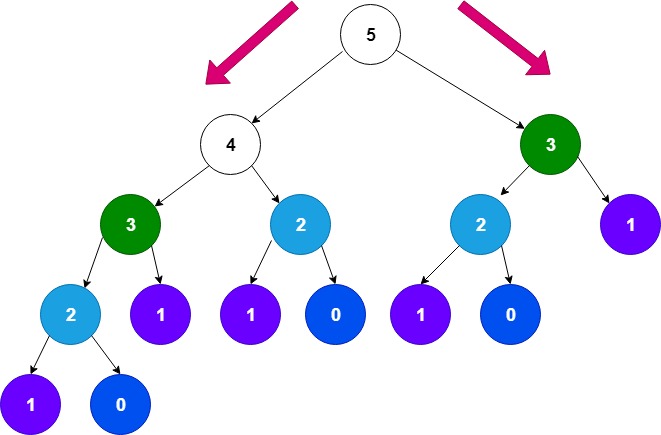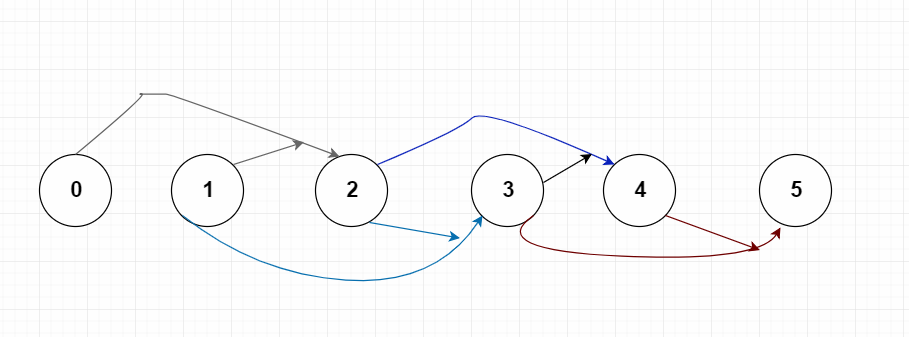The Fibonacci numbers, commonly denoted F(n) form a sequence, called the Fibonacci sequence, such that each number is the sum of the two preceding ones, starting from 0 and 1. That is,
F(0) = 0, F(1) = 1 F(N) = F(N - 1) + F(N - 2), for N > 1.
Given N, calculate F(N).
Example 1: Input: 2 Output: 1 Explanation: F(2) = F(1) + F(0) = 1 + 0 = 1.
Example 2: Input: 3 Output: 2 Explanation: F(3) = F(2) + F(1) = 1 + 1 = 2.
Example 3: Input: 4 Output: 3 Explanation: F(4) = F(3) + F(2) = 2 + 1 = 3.
Note: 0 ≤ N ≤ 30.
解决思路: 这道题最简单的思路就是直接使用递归进行解决(从给定值往小计算),但是递归的过程存在很多重复计算。当题中N给的很大时,计算时间会加长。 因此采用从小到大的方式进行计算。
如果使用递归,则步骤图如下:

可以看到,有很多节点的值被重复计算了。
而如果从小到大步骤如下:(不会产生的多余的计算)

解决代码如下:时间复杂度为O(n), 空间复杂度为O(1)
1 class Solution(object):
2 def fib(self, N):
3 """
4 :type N: int
5 :rtype: int
6 """
7 if N < 0:
8 return
9 if N == 0 or N == 1: # 当N为1 or 0 时, 直接返回。
10 return 1 if N == 1 else 0
11 one, two = 0, 1
12 for i in range(N-1): # 进行计算
13 one, two = two, one+two
14 return two